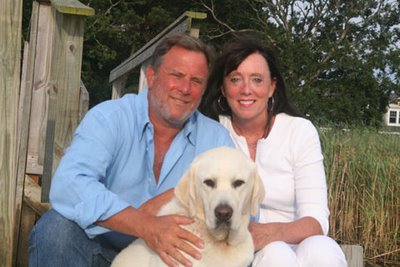
Designing America
By JUNE FLETCHER
October 6, 2006; Page W1
Ask someone to name the most influential residential architects working in the U.S. today and the list is likely to include Frank Gehry, Robert Venturi or Richard Meier. But how many would have the name Aram Bassenian?
While homeowners may never have heard of Mr. Bassenian, they may well have seen some of his work. During his 36-year career, the Newport Beach, Calif., designer estimates that builders have used his designs to produce hundreds of thousands of homes from coast to coast.
Aram Bassenian, Chairman and chief executive officer, Bassenian/ Lagoni Architects, Newport Beach, Calif. ;No. of employees: 140; Signature designs: Stone turrets; Mea culpa: Front-loading garages; What's next: Circular rooms, green gadgets
Mr. Bassenian is a production architect, part of a small, largely unknown cadre of designers who specialize in the sort of mass-produced homes typically found in housing developments and subdivisions. Working as self-employed consultants for national builders like Centex Corp., Lennar Corp. and K. Hovnanian Homes as well as for some regional and local builders, these architects, and the hundreds of designers and draftsmen who work under them, churn out dozens of plans a year for everything from million-dollar luxury residences to midpriced townhouses. (By contrast, even the most prolific and high-profile custom architects design only a handful of homes a year; Frank Lloyd Wright, for example, averaged 10 annually over a 66-year career.) Though hardly household names, top production architects are the ones who decide what most American homes look like -- whether Craftsman or Colonial will be in this year, for example, or if floor plans will be single-level or multistory.
Of the 1,716,000 single-family homes built last year, 79% were production homes, up from about 60% in the early '90s, according to the National Association of Home Builders. That's in large part because smaller, custom builders are being bought up by big builders, which have better economies of scale with suppliers and construction workers.
But the result, some critics say, is often ubiquitous, cookie-cutter design. "It's formulaic and not very distinctive," says Jeremiah Eck, a Boston custom architect and former lecturer at Harvard University's Graduate School of Design. Indeed, the cost of design typically makes up about 15% of the budget in a custom home; in a production home, it's less than 2%.
William Sherman, chairman of the architecture department at the University of Virginia, says that too often, pressured by builders, production architects lavish too much attention and money on flashy features such as granite countertops and not enough on critical elements like framing and mechanical systems.
Quality is also an issue. A survey by J.D. Power & Associates released last month found that buyers reported an average of 14 problems with newly constructed homes, up 7% from 2005, with complaints ranging from cramped garages to cheap light fixtures.
Even so, production design has come a long way from the relentlessly homogenous subdivisions that sprang up in American suburbs in the '50s and '60s. "Over time, production architects began to promote the idea that people could live in exciting spaces even if they couldn't afford their own architect," says Barry Berkus, the venerable Santa Barbara, Calif., designer.
Though most production architects keep low profiles so they won't upstage their builder clients, a handful have achieved star status within the industry, winning design awards year after year. Here's a look at four of the most prominent:
Chris Lessard
Chris Lessard, Founder and CEO, Lessard Architectural Group, Vienna, Va.; No. of employees: 150; Signature designs: Angled floor plans, back stairways; Mea culpa: Synthetic stucco; What's next: Smaller homes, detached garages
When he was just starting to make a name for himself in the late 1980s, Chris Lessard was determined to break with the Georgian Colonial tradition then dominating mid-Atlantic production architecture. Every new house, it seemed, had the same gray asphalt roofs, brown brick facades and symmetrical groupings of front windows, known in the trade as "five, four and a door."
In 1989, when he was 34, the Washington, D.C.-born architect created his breakthrough floor plan -- the Grand Renoir, which dispensed with the convention that all rooms in a basic rectangular house must be boxy. Instead, Mr. Lessard designed a Y-shaped foyer that set the interior walls in most of the first-floor rooms at an angle and opened up two separate sight lines from the front of the house to the back. The innovative 4,100-square-foot plan quickly became so popular that it has been built more than 300 times in the D.C. metropolitan area alone, Mr. Lessard says, especially in tony Virginia suburbs such as Alexandria and Reston. Currently, WCI Communities is offering the Grand Renoir in Oak Creek Club in Upper Marlboro, Md., for $897,000.
The son of a home-builder, Mr. Lessard learned about budget constraints the hard way. His father sent him out to buy hardware for a project and Mr. Lessard bought the most expensive kind -- solid brass. His father upbraided him and said that if any of his competitors used solid brass knobs and hinges, he'd install them -- if not, Chris would have to return them. (All used plated brass, he learned in a tour of the area's new homes.) It was an important lesson for the young architect: Everyone wants the best of everything but not everyone can afford it. The value of the production process, he says, is that experts have edited everything in the house with an eye to limiting costs.
As with all production architects, Mr. Lessard must stay atuned to shifting demographics. Now, with downsizing boomers and first-time home buyers poised to dominate the housing market for the next decade, he is looking for ways to eliminate wasted space. "I want to make houses that are as efficient as a boat," he says. That means getting rid of two-story foyers and vaulted ceilings and resurrecting ideas from small, efficient homes from the '20s through the '50s, like pop-out dormers, galley-style pantries, built-in bookcases and closets tucked under the eaves. Those are some of the features found in his Craftsman-style "1920s" collection currently for sale in the community of Brambleton in Ashburn, Va. The 2,500- to 3,400-square-foot homes with detached garages in the rear are being built by Miller & Smith Homes, McLean, Va.
Aram Bassenian
If Southern California sometimes looks like Tuscany, that's partly because of Aram Bassenian. In his 36 years as a production architect, Mr. Bassenian has borrowed plenty from that rural Italian style, inspired by frequent trips overseas, and has popularized stacked stone turrets, rough-hewn beams and waxed fieldstone floors in attached and detached homes. "I was trying to get away from that vague 'California look,'" says Mr. Bassenian of the red-roofed, sandy-colored villas that were prevalent throughout the Southwest.
COMING TO A DEVELOPMENT NEAR YOU
Each year, the National Association of Home Builders surveys its members to see what the home of the future will look like. Here are some predictions from this year's survey:
• Ceilings will be flat, tray or coffered, and at least 9 feet tall.
• Living rooms will disappear, replaced by a den, parlor or library.
• Dual closets will be standard in the master bedroom.
• Entry doors will be at least six inches wider (3 feet, 6 inches) than they are today.
• Garages will be bigger, but some may have tandem parking -- front to back -- because lots are getting smaller.
• Average homes will have open floor plans, with spaces defined by ceiling treatments, floor coverings, arches, columns or pillars.
• Shower stalls will get bigger, with multiple shower heads in upscale homes.
• Outdoor kitchens and fireplaces will become common.
• Staircases will move from the front to the middle or rear of the house, where they're more functional. High-end homes will have two staircases.
• Rear walls will be mostly glass, opening to the outdoors.
The 64-year-old architect concentrates on the upper end of the market, and so can play with a broader palette than most of his peers; his homes currently sell for about $500,000 to $7 million, and are found in 20 states, from Washington to Georgia. One of the first production architects to venture into semicustom work, which allows buyers to "customize" their homes to some extent, Mr. Bassenian designed 4,000- to 5,000-square-foot homes for Westlake Trails in Westlake Village, Calif., built by J.M. Peters Co. in 1990, with such features as a "morning room" nook off the kitchen for reading the paper and drinking coffee, a library, secondary bedroom suites and four-car garages. They were among the first noncustom homes to break the $1 million barrier.
Trying to lure buyers who could afford a custom home forced him to expand his design repertoire, he says; it also helped raise expectations among lower-end buyers. "What starts in higher-end housing eventually moves into the rest of the market," he says. Pulte Homes, for instance, recently started offering morning rooms and libraries in Phoenixville, Pa., and an option for a four-car garage in Las Vegas, both in projects where the houses cost around $400,000.
With $2.8 million to spend on a new house, retired businessman George Beebe and his wife, Kathleen, could easily have afforded a custom home. Instead, last November they bought the "Formal Italian Plan 3," a 4,800-square-foot semicustom home at the Cortile Collection development in Rancho Sante Fe, Calif. "They thought about all the little details so we wouldn't have to," says Mr. Beebe, referring to his five fireplaces, 400-square-foot detached casita and travertine floors -- all included in the price.
Of course, buying production also means making trade-offs. Mr. Beebe had to spend an additional $15,000 to put in extra wiring for his 11 televisions, including a 32-inch high-definition screen in his bathroom and another television in his closet. He faults the design for not taking this into account. "The sort of people who buy these houses love technology," he says.
Mr. Bassenian says it's a challenge to keep a step ahead of the tastes and interests of his upscale buyers. With such high energy prices, he says that buyers are becoming more interested in customizing their houses with green and energy-efficient features. At Portico, a community he designed in San Diego where houses start at $750,000, buyers have the option of adding bamboo or palm wood flooring, carpet from recycled materials, speed-cook ovens and solar cells on the roof. He plans to build more informal designs with circular rooms to take advantage of views, master bathrooms that are bigger than master bedrooms and two-person showers.
Carson Looney
Carson Looney's designs are as rooted in the South as his thick Memphis drawl. The architect came to prominence in 1989 for his revival of the classic Charleston shotgun house in a much-lauded development called Harbor Town, near downtown Memphis. One of the earliest "new urbanist" communities, Harbor Town featured sidewalks, front porches and shallow front yards -- commonplace in older neighborhoods but unusual for new developments at the time. All were designed to encourage conversation and connections among neighbors.
Carson Looney, Co-founder and principal, Looney Ricks Kiss Architects, Memphis, Tenn.; No. of employees: 250; Signature designs: Double porches, "friend's entry" off the kitchen; Mea culpa: Round window in every gable; What's next: A shower for Fido
A self-described "Air Force brat," Mr. Looney grew up in cramped, spare military housing, an experience that later led him to think about how to design efficient, modestly priced homes that families could live in without feeling confined. He revived some practical ideas of the past such as open rooms, where families could socialize, combined with small "retreats" such as nooks, built-in benches and window seats.
Although Mr. Looney's designs haven't been as widely reproduced during his 23-year career as those of some of his peers, they have appeared in such high-profile communities as Celebration, the "small town" built by Walt Disney Co. near Orlando, Fla. "I've always been impressed with his attention to design detail, even when he's doing affordable housing," says Deb Bassert, who oversees the design committee of the National Association of Home Builders.
Mr. Looney declined to disclose his annual income, as did the others interviewed for this article. But according to the 2005 compensation survey by the American Institute of Architects, the average salary of top production architects -- principals of firms with more than 100 employees -- is $275,600 a year. Those with smaller firms, including most custom architects, average $180,300 a year.
While best known for his 19th-century revivals, Mr. Looney had a short flirtation early in his career with '80s postmodernism, where the emphasis was on over-the-top, attention-getting details. He put round windows in every gable and specified vast baths that he now scornfully refers to as "Texas tubs." It was pretentious and gimmicky, he says.
These days, he's tossing out useless exterior ornamentation and rooms that few people use, like the living room. Instead, he is focusing on informal parts of the house that he feels have been neglected. Currently on the drawing board: an updated version of the mudroom that includes cabinets for pet-food storage, a pet shower and a nook where pets can sleep, with Dutch doors that can be partially opened so they won't feel lonely. "Everyone needs a place for stuff," Mr. Looney says.
Doug Sharp
Doug Sharp, Managing partner and president, Bloodgood Sharp Buster Architects and Planners, Des Moines, Iowa; No. of employess: 290; Signature designs: Great room; Mea culpa: Porches too small for a chair; What's next: Back to the ranch house
In 1979, Doug Sharp designed a three-bedroom, two-bath ranch house with a new idea at the time -- a "great room" that did away with the family room's walls. Nearly three decades later, that 1,600-square-foot plan is still selling and the great room has become a fixture in almost every new home in America.
Best known for helping to popularize open floor plans, Mr. Sharp's firm was one of the first to sell books of its architectural plans to the public. The service upped the ante on design for homeowners, who have become more discerning, says Katherine Lee Schwennsen, president of the AIA. Before, many builders without any design experience would simply take generic plans out of an old pattern book, available through entities like Sears that may not have been created by an architect. "Mr. Sharp brought real design to the process," she says.
Mr. Sharp has always tailored his work to regional tastes and climates. But for the homes at Harbor Island in Tampa, Fla., in 1989, he went a step further and arranged rooms in a C-shape around a central courtyard, as many Latin American homes do -- a look that's widely imitated throughout the Sunbelt today. Currently he is adapting the feature to colder climates. In Astor Place, a development in Rocky River, Ohio, that fits townhouses together like puzzle pieces at 10 to 12 units per acre, he included tiny courtyards screened by ironwork and landscaping. They aren't big enough for much more than a bistro table and a couple of chairs, but they do give owners a little breathing room.
Mr. Sharp says it's difficult to design for today's smaller lots, but he's trying to overcome mistakes he made in the past, such as making porches that were too shallow to hold a chair. Currently, he is reviving Art Deco and mid-'50s contemporary styles, though with higher ceilings and green materials. "The ranch house is back," he says of the Eisenhower-era icon, perfect for downsizing boomers. (Indeed, a survey of 500 residential architects by the AIA shows that demand for single-level homes has increased 10% in the first quarter of this year, to 39%, over the same period a year before.) To keep the homes from feeling confining, Mr. Sharp is making ceilings taller -- up to 13 feet, while eliminating little-used spaces like the living room.
There are trade-offs, of course. Marleen Korkik, 52, a sales and marketing administrator, paid $300,000 for a two-bedroom ranch that Mr. Sharp designed for Lowry West, a new development in Denver. She likes some of the homey details like shutters and flowerboxes. But Mr. Sharp put the master bedroom in the front of the long narrow lot and the garage in the rear so it doesn't dominate the streetscape. That's a problem for Ms. Kordik, who now has to listen to folks chatting on the sidewalk, which is just 20 feet away from her bedroom.


 "When you were born says a lot about your idea of the perfect house. Here's a review of the features that appeal most to boomers, Gen X and Gen Y, plus tips on how to sell to homebuyers in each generation."
"When you were born says a lot about your idea of the perfect house. Here's a review of the features that appeal most to boomers, Gen X and Gen Y, plus tips on how to sell to homebuyers in each generation."


 Zillow gets zinged, surprise, surprise. When HomeGain launched its home valuation tool in 1999, most consumers loved us but many hated us. We were estimating the value of an expensive and emotional asset: peoples' homes.
Zillow gets zinged, surprise, surprise. When HomeGain launched its home valuation tool in 1999, most consumers loved us but many hated us. We were estimating the value of an expensive and emotional asset: peoples' homes.







 Steve Murray is one of the most respected real estate consultants in the business. Many of the largest companies in the industry are on his client list and he has brokered several large mergers and acquistions in recent years.
Steve Murray is one of the most respected real estate consultants in the business. Many of the largest companies in the industry are on his client list and he has brokered several large mergers and acquistions in recent years.






 The tweaking-down of the amount of sunlight we experience as we roll into fall is getting more obvious by the day. I remember when living in New England that this weekend was the height of the "leaf peaking season".
The tweaking-down of the amount of sunlight we experience as we roll into fall is getting more obvious by the day. I remember when living in New England that this weekend was the height of the "leaf peaking season". 
 Diane Saatchi, formerly Principal Broker of Dayton-Halstead Real Estate.
Diane Saatchi, formerly Principal Broker of Dayton-Halstead Real Estate.  Jack Pearson, formerly of Allan Schneider Associates.
Jack Pearson, formerly of Allan Schneider Associates. Gioia DiPaolo, formerly Cook Pony Farm Real Estate. Dare we say that Gioia is the East End's most well-put-together real estate professional. The art-collecting, multi-lingual diva has been the top-selling agent for Cook, now Corcoran, in the Sag Harbor market for six years running. Gioia has loyal clients and customers from all over the globe and truly knows the waterfront properties of the Sag Harbor and North Haven market better than anyone.
Gioia DiPaolo, formerly Cook Pony Farm Real Estate. Dare we say that Gioia is the East End's most well-put-together real estate professional. The art-collecting, multi-lingual diva has been the top-selling agent for Cook, now Corcoran, in the Sag Harbor market for six years running. Gioia has loyal clients and customers from all over the globe and truly knows the waterfront properties of the Sag Harbor and North Haven market better than anyone. 














